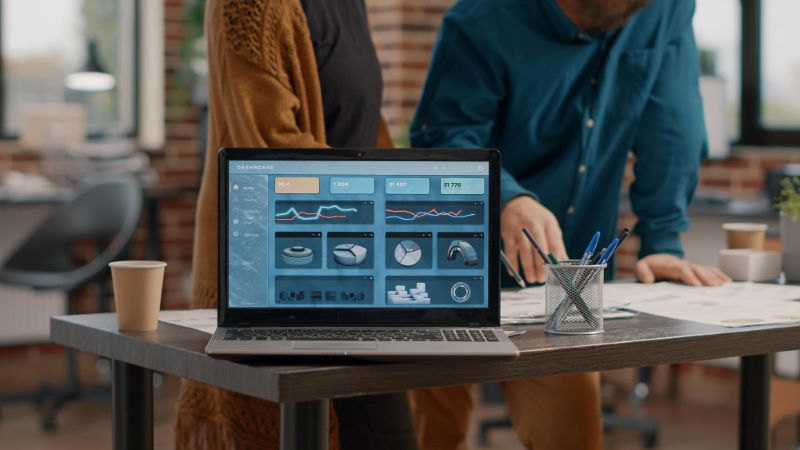eCommerce Scraping And The Best eCommerce Web Scraper
To stand out from the crowd, you need to amass data on your competitors to adjust your strategies, discover the best practices in your industry, and predict future trends — and one of the best ways to do this is with an eCommerce web scraper.
Table of Contents
A powerful form of data collection, web scraping allows you to gather a wide array of information from websites and transfer them to spreadsheets and databases. Although it sounds difficult to the uninitiated, web scraping is actually quite simple if you use an Application Programming Interface (API). Using an API will automate a lot of the repetitive work associated with manual scraping — saving you a lot of time and energy that you can use for other tasks.
Read on to learn more about why you should use a scraper, why real-time data is important for empowering your business, and why web scraping with an API is the best way to get real-time eCommerce data. You’ll also learn how you can scrape real-time eCommerce data with Scraping Robot, a browser-based, user-friendly web scraper that you can use to get started on your research.
If you’re looking for certain information, use the table of contents to jump to a specific section.
Why Entrepreneurs Should Use eCommerce Scrapers

What is data scraping?
Before we dive into why entrepreneurs should use eCommerce scrapers, let’s first delve into the concept of data scraping.
Data scraping is a quick and effective way of extracting and organizing data from websites for further processing and analysis. Traditionally, data extraction was done manually — with employees sitting in front of the computer for hours at an end and pouring over different web pages to locate and input information into spreadsheets.
However, data scraping bots have made manual extraction obsolete. By automating the repetitive aspects of web scraping and crawling, the bot will locate and input information from target websites for you. With a few clicks of your mouse, you can tell the scraper what data to extract.
Advantages of data scraping
Data scraping provides many advantages to those working in the eCommerce industry:
- Price tracking and comparison
Many eCommerce businesses use scraping to get a look at how their competitors price their products. Because there are so many eCommerce stores, manually researching how each competitor prices their products would take ages.
By programming eCommerce price scrapers to locate and analyze specific data categories, you can get the information you need to adjust your prices as needed.
- Researching customer preferences and statistics
To survive in the bustling eCommerce industry, you need to pinpoint the needs and desires of your target market. Use eCommerce scrapers to extract and analyze the range of products and services your competitors provide to get a better idea of how you can expand your business.
With so many new products and services appearing on the market every day, use eCommerce data scrapers and eCommerce product scrapers to compile a list of all the products and services that your competitors offer. Then you can use keywords to go through the list and determine which products and services you could offer to gain a competitive edge over other eCommerce stores.
You can also use data scraping to perform predictive and sentiment analysis to determine what your customers are talking about online. By scraping through social media platforms, you can gather vital statistics about consumers’ preferences, experiences, and opinions on various products and services. This will help you boost your business’s appeal and user experience.
- Generate leads
Scrapers also help you get more leads for your eCommerce business.
For instance, you can scrape your top competitors’ social media profiles and websites to discover what issues they face when selling their products to consumers. Using this data, you can take steps to prevent these issues from cropping up, helping you attract and retain more customers.
Additionally, you can scrape popular blogs and news websites to discover the hottest trends in your industry.
Pay particular attention to:
- The range of services offered
- The way descriptions are worded
- How companies promote their products (i.e., using specific hashtags, filming short videos in a particular way, etc.)
You can then make your website, marketing materials, products, and services stand out more based on what you’ve learned.
- SEO analysis
Finally, eCommerce scraping can give you an advantage in SEO analysis.
Scraping your competitors’ websites can give you valuable SEO analysis data — including things like meta descriptions, titles, keyword density, and what kind of content they post on their sites. Target websites that rank high on Google so you can take a look at the keywords and the other SEO techniques they use. This way, you can boost your SEO game and rank higher on Google.
Why Web Scraping eCommerce Sites with an API is the Best Way to Get Real-Time eCommerce Data

Now that you know why eCommerce data scraping is important, let’s take a look at the importance of scraping real-time data and why web scraping with an API is the best way to get real-time eCommerce data.
What is real-time data?
Real-time data is data that you get immediately after collecting it. Unlike other forms of data, there is no delay in receiving the data once you scrape it.
You can distinguish real-time data from other forms of data since it requires:
- Constant input
- Constant processing
- Constant output of data
Examples of real-time eCommerce data you can get from web scrapers include:
- eCommerce purchases
- Referral traffic from different sources (i.e., Where are your visitors coming from and how can you target the visitors from these sources? Do they have any specific needs that you can meet?)
- Visitor engagement (i.e., How long is each visitor staying on the store page of your website on average? How many web pages do they visit on average before leaving?)
Why is real-time data important for eCommerce?
In many ways, data scraping for eCommerce is like observing the shopping floor of a brick-and-mortar store. By analyzing customers’ behavior and data trends, you can identify purchasing patterns and find out what works best for your eCommerce store.
In general, there are three key areas you should focus on when streaming real-time data for your eCommerce store:
- Customer Lifetime Value: Analyze what makes customers come back to your store. Is there something about your store that stands out from your competitors? If so, focus on those points and personalize communications to develop long-term relationships with consumers.
- Customer Acquisition: By looking at what attracts new customers to your store, you can create new targeting strategies that reduce advertising costs and boost business agility.
- Customer Loyalty and Retention: Determine the effort required to retain a specific client or cluster of clients. This will give you a clearer idea of which marketing strategies are worthwhile.
Why is an API the best way to get real-time eCommerce data?
To get real-time data, you need to use an API. It’s the best and only way to get real-time eCommerce data. Other forms of web scraping don’t work in real-time.
An API is a software interface that transfers data from one software to another. You can use an API to funnel data between your scraping software and your data analytics software or database, reducing the need for manual input.
Most APIs can be difficult to use, particularly if you’re not a coder. Fortunately, there are some eCommerce scraping tools, such as Scraping Robot API, that don’t require a lot of coding knowledge. Scraping Robot also doesn’t require you to download any software — it’s a free, browser-based API scraper that is incredibly easy to use, even if you are new to scraping.
Web Scraping eCommerce Sites with Scraping Robot

Here’s how you can scrape real-time data from eCommerce sites with Scraping Robot API:
- Go to the Scraping Robot API page.
- Open the web page you want to scrape in another window or tab.
- Copy the target web page’s URL.
- Paste the URL into Scraping Robot API.
- Press “Run.” You will immediately receive the full HTML output.
After getting the full output, you can export the data to your analytics program or spreadsheet for further processing.
Unlike many other web scrapers and APIs, Scraping Robot API gives you all of the target web page’s HTML categories. This simplifies the scraping process since many other scraping tools employ an extraction sequence for different HTML elements. For instance, scrapers typically only extract the text first. After that, if you want to extract other elements, you will have to manually select other categories, such as href attribute, JSON object, and full HTML.
Conclusion

To stay ahead of your competitors in the increasingly crowded eCommerce industry, get an eCommerce web scraper. By engaging in web scraping for eCommerce, you’ll be able to gather vital real-time data such as prices for products and services and customer preferences. You’ll also be able to generate leads and engage in high-level SEO analysis.
Although scraping may sound daunting — particularly if you have no coding experience — there are scraping tools that make gathering data incredibly user-friendly. One of these is Scraping Robot API, a browser-based tool that provides you with real-time eCommerce data that can empower your business. With just a couple of clicks, you’ll be able to collect and organize all HTML data categories and funnel the extracted data to your analytics software or database for further evaluation.
The information contained within this article, including information posted by official staff, guest-submitted material, message board postings, or other third-party material is presented solely for the purposes of education and furtherance of the knowledge of the reader. All trademarks used in this publication are hereby acknowledged as the property of their respective owners.
